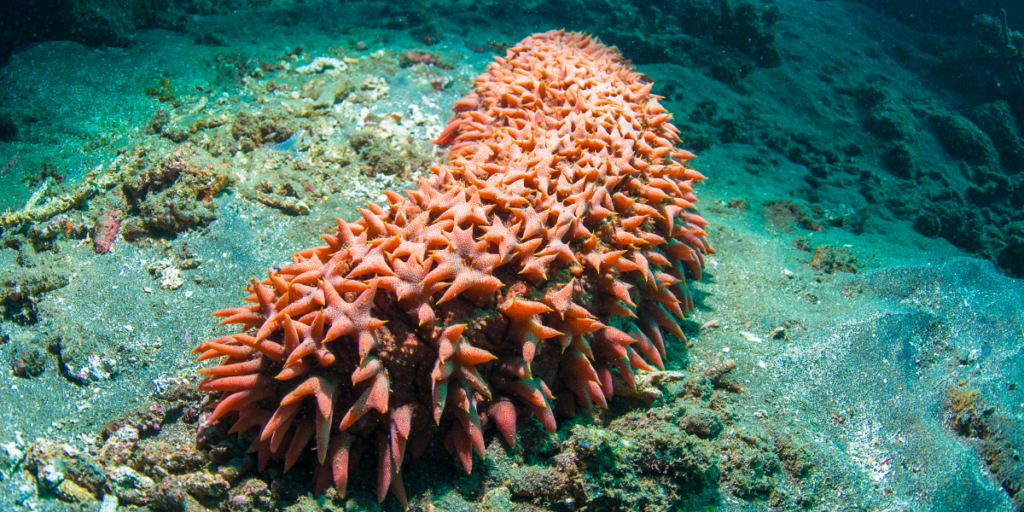Are Sea Cucumbers a Cleanup Solution to Fish Farm Pollution?
Posted
Last Updated
By Yale School of the Environment.
Seafood farm operators are breeding and deploying sea cucumbers to vacuum up the massive amounts of fish waste that pose a major problem for their industry. It is part of an effort to redesign fish farms with multiple species so that they work more like natural ecosystems.
Off the coast of the Hawaiian Island of Kauai, an underwater metropolis bustles. Sea turtles glide lazily through the surf while schools of fluorescent yellow butterflyfish weave between basketball-size sea urchins and sharp corals.
But Dave Anderson isn’t distracted by the otherworldly charm of the coral reef — he’s here on a mission. Around 70 feet below the surface, he finds his prize: a red sea cucumber.
Anderson plucks the spiky creature from the sea floor and, after a brief boat ride, delivers it to a glistening 18-acre pond at the Kauai Sea Farm, on the island’s southwest coast. Anderson is the production manager of this small commercial operation, which raises mullet, barracuda, tilapia, and other seafood for sale to local restaurants. But the sea cucumber in Anderson’s hands isn’t for eating — at least, not yet. Instead, this bottom-dwelling echinoderm is the newest member of the fish farm’s cleaning crew.
In the wild, sea cucumbers roam the sea floor, hoovering up sand and digesting the fish waste, algae, and other organic matter it contains. Sand they excrete is cleaner than sand they consume, which is why sea cucumbers are often called “the true vacuums of the sea floor,” says Arnold Rakaj, a marine biologist at the University of Rome.
Continue reading at Yale School of the Environment.

